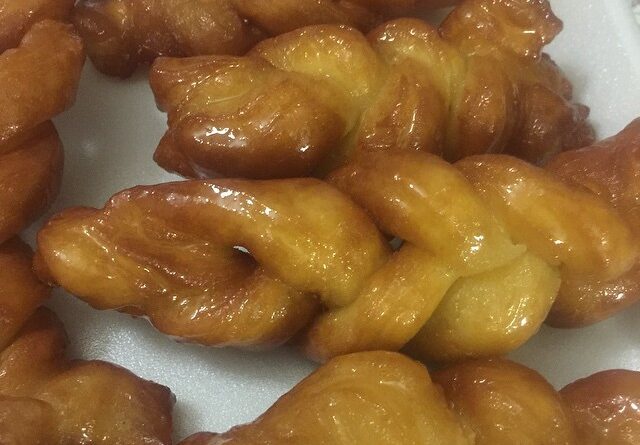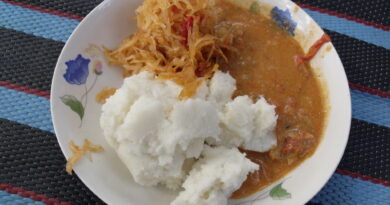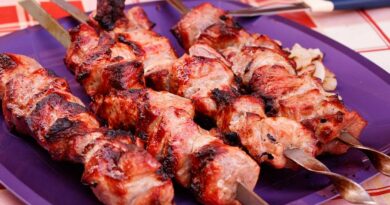Koeksister
The Delightful World of Koeksisters: A Sweet South African Treat
South Africa is a country renowned for its cultural diversity, which is beautifully reflected in its culinary traditions. Among the plethora of delectable dishes and snacks, one stands out for its unique taste and fascinating history: the koeksister. This sweet, syrupy confection has captured the hearts and palates of many, both within South Africa and beyond. In this article, we will explore the origins, preparation, cultural significance, and variations of the beloved koeksister.
The Origins of Koeksisters
The history of koeksisters is as rich and intertwined as the treat itself. The name “koeksister” is derived from the Dutch words “koek,” meaning cake, and “sister,” which is a play on the word “twisted.” This name aptly describes the appearance of this treat, which is typically a plaited or twisted doughnut-like pastry soaked in syrup.
Koeksisters have their roots in the Cape Malay community, a group of people of Indonesian, Malaysian, and East African descent who were brought to the Cape Colony by Dutch colonists in the 17th and 18th centuries. The Cape Malay people brought with them a rich culinary heritage, including the tradition of making sweet, fried pastries. Over time, these culinary traditions merged with those of the Dutch settlers, resulting in the creation of the koeksister.
The Preparation of Koeksisters
Making koeksisters is a labor of love that requires patience and precision. The process begins with preparing the dough, which is typically made from flour, baking powder, salt, and a little sugar. Some recipes also call for the addition of butter or margarine, which is rubbed into the dry ingredients to create a crumbly texture. The dry mixture is then combined with milk or water to form a soft dough.
Once the dough is prepared, it is rolled out and cut into strips. These strips are then braided or twisted together to form the characteristic koeksister shape. The braiding process is not only a nod to the pastry’s name but also serves to create a texture that allows the syrup to penetrate the dough more effectively.
The braided dough is then deep-fried until golden brown. This is where the magic truly happens. The hot, crispy pastries are immediately plunged into ice-cold syrup, which is typically made from sugar, water, and sometimes flavored with spices like cinnamon or ginger. The contrast between the hot pastry and the cold syrup creates a delightful texture: crispy on the outside and syrupy on the inside.
Cultural Significance of Koeksisters
Koeksisters are more than just a sweet treat; they hold significant cultural value in South Africa. They are often enjoyed during special occasions, family gatherings, and community events. For many South Africans, the act of making and sharing koeksisters is a cherished tradition passed down through generations.
In addition to their role in family and community life, koeksisters have also become a symbol of South African identity and heritage. They are often featured in tourism campaigns and culinary showcases, representing the unique blend of cultures that make up the nation’s history.
Variations of Koeksisters
While the traditional koeksister is made from a simple dough and syrup, there are numerous regional and individual variations of this beloved treat. These variations often reflect the diverse cultural influences and personal preferences of those who make them.
Cape Malay Koeksisters
One of the most well-known variations is the Cape Malay koeksister. Unlike the traditional version, Cape Malay koeksisters are not braided but rather shaped into balls or logs. They are flavored with spices such as cinnamon, cardamom, and ginger, giving them a distinct, aromatic taste. The syrup used for soaking Cape Malay koeksisters is also different, often incorporating coconut milk and sometimes tinted with food coloring to give a vibrant appearance.
Afrikaans Koeksisters
The Afrikaans version of koeksisters, which is the most commonly recognized form, features the classic twisted or braided shape. These koeksisters are typically sweeter and have a firmer texture compared to their Cape Malay counterparts. The syrup is often flavored with lemon juice or zest, adding a refreshing tang that balances the sweetness.
Modern Twists
In recent years, creative bakers and chefs have experimented with modern twists on the traditional koeksister recipe. Some have introduced new flavors, such as chocolate, coffee, or even savory ingredients like cheese and herbs. Others have played with the presentation, creating mini koeksisters or even koeksister-inspired doughnuts. These modern variations have helped to keep the tradition alive while appealing to contemporary tastes.
The Joy of Making Koeksisters
For many South Africans, making koeksisters is a labor of love that involves the whole family. The process of preparing the dough, braiding it, and frying the pastries is often done together, creating a sense of community and togetherness. It is not uncommon for families to gather on weekends or special occasions to make large batches of koeksisters, which are then shared with friends and neighbors.
The act of making koeksisters is also an opportunity to pass down traditions and stories from one generation to the next. Grandparents often teach their grandchildren the art of braiding the dough and share tales of their own childhood experiences with the treat. In this way, the tradition of koeksisters is kept alive, connecting the past with the present.
Koeksisters in Popular Culture
Koeksisters have found their way into various aspects of popular culture in South Africa. They are frequently featured in cookbooks, food blogs, and television cooking shows, showcasing their enduring popularity. Additionally, koeksisters are a common sight at markets, fairs, and festivals, where vendors sell them fresh and hot to eager customers.
In recent years, koeksisters have also gained international recognition. South African expatriates and food enthusiasts around the world have introduced the treat to new audiences, often sharing recipes and stories through social media. This global exposure has helped to cement the koeksister’s status as a beloved and iconic South African delicacy.
Conclusion
The koeksister is more than just a sweet pastry; it is a symbol of South African culture, history, and community. From its origins in the Cape Malay community to its modern-day variations, the koeksister has evolved while retaining its essential qualities of sweetness, crispiness, and syrupy goodness. Whether enjoyed as a special treat during celebrations or as a comforting snack on a lazy afternoon, koeksisters continue to bring joy and a sense of connection to those who make and eat them. In every bite of a koeksister, one can taste the rich tapestry of South African heritage, making it a truly delightful and meaningful confection.



